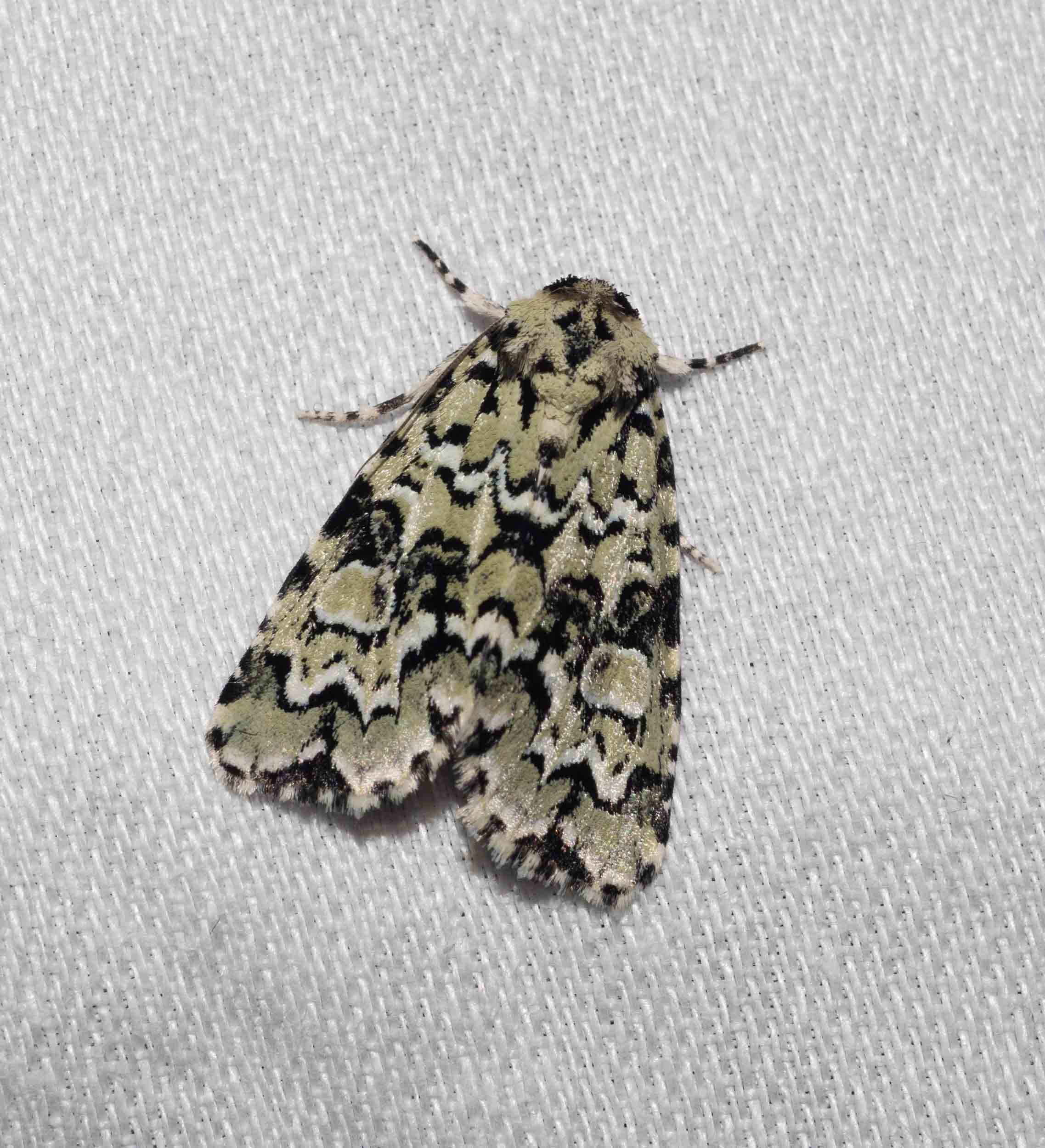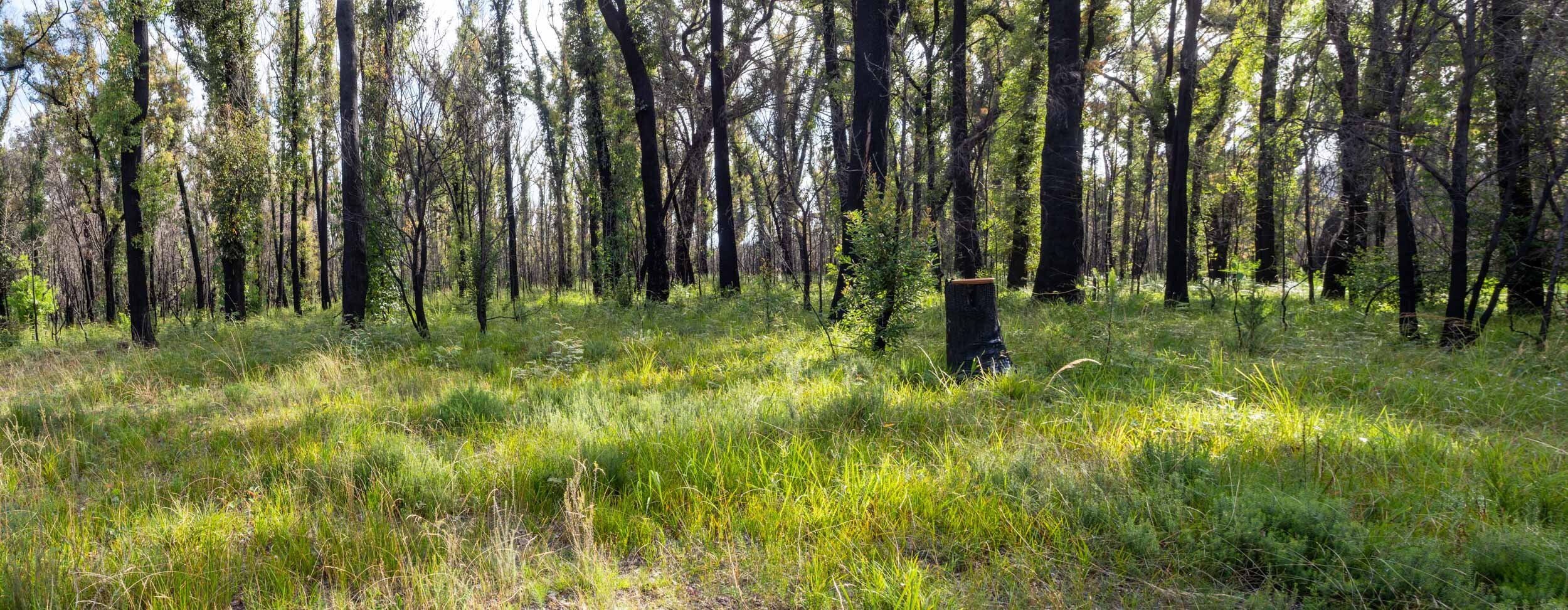Moths - a year on

Moths are an excellent proxy for the health of an ecosystem, given their diversity and varied diet and habitat requirements. I’ve used them to assess how well our forest has recovered from the January 2020 bushfire.
Three months ago, I gave a summary of how our moths have fared since that fire. The current update includes data we’ve gathered from three additional light sheet surveys as well as regular searches of the forest undergrowth during the day.
Moth habitat
All strata of the forest - undergrowth, middle storey and canopy - are recovering
The forest vegetation, upon which moth larvae depend as a food source, has recovered fantastically well from the devastation wrought by the fire. I’ll report on this in detail in a later post, but here’s a quick summary.
At ground level, the growth of grasses, sedges and forbs has been more vigorous than we’ve seen in years. The middle storey is also rebuilding apace. Many banksias and geebungs pushed out vigorous epicormic growth soon after the fire and in recent weeks, post-fire casuarina, wattle and eucalypt seedlings have transformed into proper bushes. Most of our eucalypt trees still retain epicormic growth on their trunks, which for many months served as a middle storey replacement. All eucalypt species, except for Silvertop Ash, Eucalyptus sieberi, have either partially or completely regained their crowns.
All except a dozen or so of the >200 plant species we had recorded in the forest before the fire have regrown and many new ones have made an appearance in its wake. This healthy plant growth bodes well for a strong recovery in the moths.
The moth roll
I reported in my last moth stocktake that before the fire we had seen 308 moth species in 28 different families in our 4ha of native forest. (You can view all of our pre-fire moth sightings, including butterflies, on our iNaturalist account. Note that some of these identifications are tentative and in several cases, the moth has been identified only to family, subfamily or genus level).
My latest count of moths seen since the fire (up to 16 February 2021) is 239 species in 28 families. These are shown in the lists below. (Again, see our iNaturalist account).
It’s clear from this data that our regenerating forest sustains a high level of moth diversity. The total number of species now approaches 80% of that seen before the fire. That’s an impressive result, bearing in mind that we’re comparing a 9 year pre-fire to a one year post-fire period.
For the record, we have now observed a total of 381 moth species since we started living in the forest. They are by far and away the most speciose group of organisms we’ve seen here. Mind you - they do get a lot of my attention!
So has everything returned to normal since the fire?
Well, no. If it has, this is the new normal.
I pointed out in my previous update in mid November that 56 of the moth species sighted since the fire were ‘new’ ones - we hadn’t seen them previously in our forest.
This number of new post-fire moth species has now increased to 107. These are marked in yellow in the ‘Grouped by species’ list above. Here are some of these new additions to our home list.
A lightsheet is a lucky dip
Are these previously unrecorded moths really new, or did we just overlook them before the fire?
This raises the question of whether a lightsheet survey provides a reasonably complete sample of the moth species present in the forest on that night.
One possible way to address this question is to make a lightsheet survey in the same position in the forest on consecutive nights and compare the species tallies.
We did exactly this on the nights of January 13 and 14 this year, using the same 2x8W fluorescent black light unit in the same location as for lightsheet surveys in 2020. There was virtually no moonlight on those nights, weather conditions were similar, with light winds and as previously, we carried out observations right through the night.
The following pie charts show that only 9 of the 43 and 36 species seen on those two nights were in common.
We carried out another survey on the next moonless night on February 10. We used a more powerful light source this time - a 28W black light unit - but we stopped our observations at 12:30am.
On this occasion we observed many more individual moths and a larger number of species - 60. That’s perhaps not surprising, given the stronger attracting light.
But again, there was little overlap with the species seen on January 14 and 14 - only 9 and 13 species, respectively.
I conclude from this data that a lightsheet survey on any single night
reveals only a fraction of the moths present in the forest at that time and
this is a largely random selection of the moth population - a “lucky dip”
It follows that the ‘new’ moths we have seen since the fire could very well have been present in the forest beforehand. And, conversely, moths that appear to be missing since the fire might still be there. The only thing that counts is a positive observation!
















